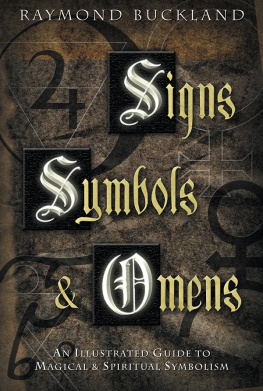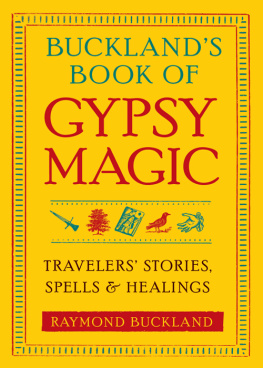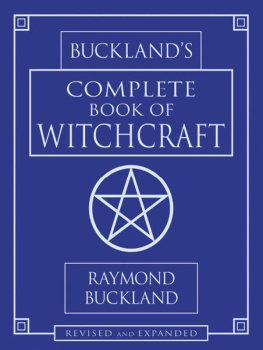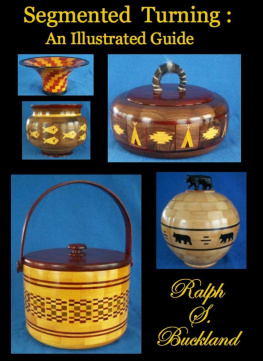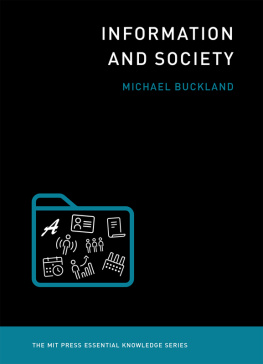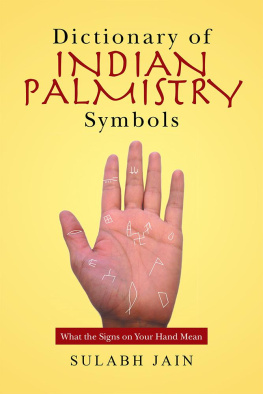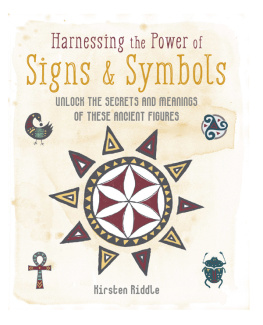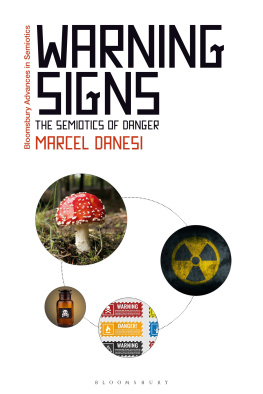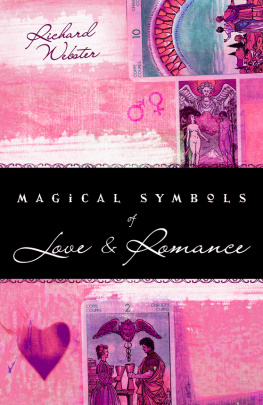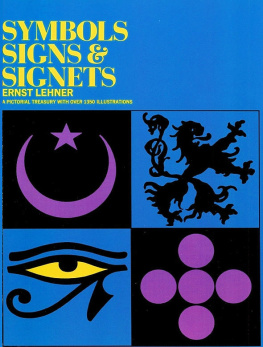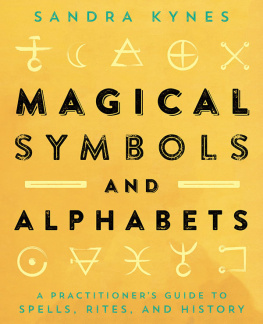Raymond Buckland has been interested in the occult and matters metaphysical for over fifty years, has been actively involved in various aspects of the subject for over forty years, and has been writing about it for over thirty years. He has written more than thirty books, has lectured and presented workshops across the United States, and has appeared on major television and radio shows nationally and internationally. He has written screenplays, been a technical advisor for films, and appeared in plays, movies, and videos. Ray comes from an English Romany (Gypsy) family and presently resides, with his wife, Tara, on a small farm in north-central Ohio.
Llewellyn Publications
Woodbury, Minnesota
Copyright Information
Signs, Symbols & Omens 2003 by Raymond Buckland.
All rights reserved. No part of this book may be used or reproduced in any matter whatsoever, including Internet usage, without written permission from Llewellyn Publications, except in the form of brief quotations embodied in critical articles and reviews.
As the purchaser of this e-book, you are granted the non-exclusive, non-transferable right to access and read the text of this e-book on screen. The text may not be otherwise reproduced, transmitted, downloaded, or recorded on any other storage device in any form or by any means.
Any unauthorized usage of the text without express written permission of the publisher is a violation of the authors copyright and is illegal and punishable by law.
First e-book edition 2014
E-book ISBN: 9780738716619
Book design by Donna Burch
Cover design by Kevin R. Brown
Editing by Andrea Neff
Interior illustrations 2003 Raymond Buckland
Llewellyn Publications is an imprint of Llewellyn Worldwide Ltd.
Llewellyn Publications does not participate in, endorse, or have any authority or responsibility concerning private business arrangements between our authors and the public.
Any Internet references contained in this work are current at publication time, but the publisher cannot guarantee that a specific reference will continue or be maintained. Please refer to the publishers website for links to current author websites.
Llewellyn Publications
Llewellyn Worldwide Ltd.
2143 Wooddale Drive
Woodbury, MN 55125
www.llewellyn.com
Manufactured in the United States of America
Acknowledgments
Many thanks to Nancy Mostad, for suggesting this book. Thanks also to Andrea Neff, Donna Burch, Kevin Brown, Hollie Kilroy, and all at Llewellyn for producing this book.
Dedication
To my wife, Tara, who always encourages and supports me.
Contents
I ntroduction
The metaphysical field is replete with symbols and sigils, many of them incomprehensible to the uninitiated. In the field of Witchcraft alone there are degree symbols, athame sigils, pentacle signs, and many more. Ceremonial or Ritual Magic contains a host of signs and symbols together with such things as magical alphabets, magic squares, and talisman markings. Voodoo has its vevers, and alchemy possesses another host of symbols. From the well-known zodiacal signs of astrology to the intricacies of the Pennsylvania Dutch hex signs, there are many fascinating secrets to be uncovered.
Speaking of religious symbols, Carl G. Jung said that their role is to give a meaning to the life of man.1 Symbols are one thing, but symbolism is much more. Many symbols can be found in various cultures, yet the symbolism of those signs may be very different from one culture to the next. A good example is the swastika. This simple symbol is found as far back as 10,000 b.c.e. The name comes from the Sanskrit, meaning so to be. It is found on ancient Indian coins, on Japanese Buddhas, and in ancient Greece, China, Persia, Scandinavia, and throughout Europe. The Christian Crampone Cross is a swastika. Frequently the swastika symbolizes the sun. The fact that the Nazis of Germany, in the Second World War, adopted it as their symbol does not make the swastika itself evil. No symbol is good or bad in itself; it is what the symbol means to the person using it that is important . Another example of that is found with the pentagram. An inverted pentagram (with the point downward) is not in itself evil or a symbol of the Christian Devil. The inverted pentagram, again, is found in many places. When used by Satanists it may well be symbolic of evil, yet when used by, for example, Wiccans, it is a symbol of good. So no symbol in and of itself is good or bad. It is how it is used, and how it is regarded by the person(s) using it, that matters.
In this book I try to cover as many signs and symbols as I can in the space available. Obviously it is not possible to cover every single symbol of every country and belief system from all civilizations, but I have tried to include a good representation. Im sure there will be many I miss and some that belong to the normally hidden inner secrets of various organizations to which I am not privy. Any reader with knowledge of symbols I have neglected, who feels they should be included, please feel free to contact me, care of the publisher, so that we may consider them for inclusion in future editions of this book.
The symbols as I have drawn them are as true as possible to the way they would normally be drawn and used. Some other sources show examples of symbols that are neatly drawn obviously by mechanical means (such as with a compass and straightedge) or that are even computer-generated. I have avoided that and have done virtually everything freehand. The alchemists of old did not use drawing instruments any more than did the Native Americans, the Travelers, the Australian Aboriginals, or most of those from whom I have taken the symbols. So, for the signs and symbols depicted here I have striven for that same natural appearance.
Raymond Buckland
A lchemy
Some scholars say the name alchemy comes from the Greek cheo , meaning I pour or I cast, since much of alchemy has to do with the working of metals. But many believe the word comes from the Egyptian Khem, meaning the black land (land with black earth), and see that as indicating Egypt as alchemys place of origin. The Arabic article al was added to Khem to give alchemy . Later, as the science (some call it a pseudoscience) progressed, the article was again dropped, to become chemistry . Alchemy certainly is the early history of chemistry.
There was an early Egyptian alchemist whose name was Chemes. He wrote a book, called Chema , about his experiments trying to turn base metal into gold. Some few believe that the word alchemist comes from his name.
Whatever the origin of the word, it seems certain that the practice of alchemy had its beginnings in the Hellenistic culture of Alexandria, Egypt, which was the center of the world of learning at that time. In fact alchemy is a blending of Egyp tian technology, Greek philosophy, and Middle Eastern mysticism. The first alchemists were the metallurgical workers who prepared precious metals for the nobles but also produced cheap substitutes for the less affluent. These cheaper substitutes were often disguised to look like the more precious metals. It didnt take long for the idea to develop that it might be possible to actually produce the precious metals themselves. This idea, in fact, was backed by Aristotles theory that there was a prime matter that was the basis for all substances. Astrology added the concept that the greater outer world of planets and stars reflected the inner world of humankind: a macrocosm and a microcosm. It was believed that under the proper astrological influences, it should be possible to change one metal into another; for example, lead into gold. In the same way that humankind perfected, going through death and rebirth, so might metals perfect and grow from one base form to another higher form.

